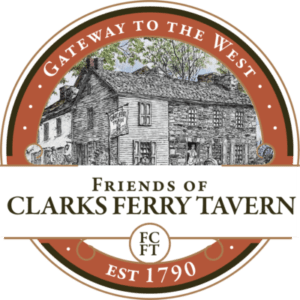David English, Sr.
Pioneer and Entrepreneur
In 1762, David English, Sr., a yeoman farmer from what is now Dauphin County, began to claim land that in time became part of Miller and Oliver Townships and Newport Borough. With an eye for business, he constructed grist mills on the Little and Big Buffalo Creeks, two major tributaries of the Juniata River. Needing labor, in 1766 English paid the transatlantic transportation for two male indentured servants who were legally bound to work for years.
A ca. 1900 view of the David English Mill along the Little Buffalo Creek. The 1889 Episcopal Church stands in background on the Newport side of the bridge.
In 1775, English filed a patent on the alluvial land between the Little Buffalo and Big Buffalo Creeks and acquired complete ownership of the property. Under financial stress, heir David English, Jr. sold this property in 1789 to Paul Reider, whose sons laid out and sold lots in what became Newport Borough in 1840.
In 1834, a wooden bridge was constructed over the Little Buffalo at 2nd Street, followed by an iron bridge ca. 1875. In 1902 the current stone bridge was built.
A mill stood for over two centuries on what became the corner of 2nd and Dock Streets, Oliver Township. Damaged in 1972 by Hurricane Agnes, the surviving structure along with the mill race were razed. A grassy knoll now covers the site of David English’s 18th century pioneering industry.
The 2nd Street bridge crossing north from Oliver Township to Newport, ca. 1910.
In recognition of his pioneering efforts, both Newport Borough and Oliver Township resolved in 2016 to name the 2nd Street bridge after David English, Sr.
These citations and additional copy will be on the web site.
Photographs and historical materials courtesy of the Perry Historians. Source material for this article from warrant maps, the Michael Hartzell 1888 history of Newport, the Newport News and Ledger newspapers of the period, the English Family file of the Perry Historians, Record of Indentures of Individuals Bound Out as Apprentices, Servants, Etc., p. 126. Baltimore: Genealogical Publishing Co., 1973 and H.H. Hain’s History of Perry County (1922). My thanks to Harry Focht, Steve Metzger, Jean Tuzinski, Jane Hoover, Russ Hoover, Barbara Holliman and Bob Flickinger for their assistance, guidance and proof reading. Any errors or omissions are solely the responsibility of Glenn N. Holliman, 2016.
.

